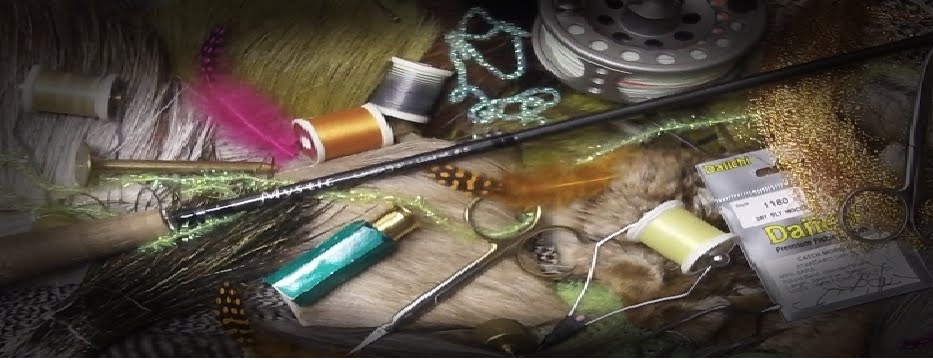The marabou muddler is one of my favorite general purpose fly pattern. Last spring Art and myself did well using the yellow version for smallmouth, carp, and northern pike on the Allegheny Reservoir, trout on the Kinzua Tailwater, and Chadakoin River carp all summer long. Tied with a light cone, the buoyant deer hair gives this fly a slow sink that is perfect for cruising carp. I split this pattern into two steps, the body and the head since you must change from the 6/0 you use for the body to the heavier stuff you use to spin the deer hair.
Hook: MFC no. 7008 size 8 or a Daiichi 2220 size 6-10
Weight: gold colored brass conehead
Body
Thread: 6/0
Tail: red schlappen fibers
Body: silver braid
Wing: yellow marabou
Flash: pearl krystal
Head
Spun Deer Hair or Cow Elk
The Body
STEP 1: Take a MFC no. 7008 size 8 or a Daiichi 2220, flatten the barb, and slip on a appropriately sized gold colored brass conehead. Attach your 6/0 black thread behind the conehead and wrap back to the tie in point.
 |
Take a large clump of red schlappen feather fibers and tie them in so they extend 1/2 the length of the hook shank past the tie in point.
 |
 |
 |
STEP 3: Take a plum of yellow marabou, remove the center stem, and tie in so the marabou extends the same length as the red schlappen does. Tim off the excess and secure several wraps of thread.
STEP 4: Tie in 3 strands of pearl krystal flash onto either side of the marabou. Trim so they are the same length as the marabou. Whip finish and trim off the 6/0 thread.
 |
 |
| Tie up several bodies before tieing the deer hair heads. |
The Deer Hair
STEP 5: Take your 3/0, "G", "GX2", or other heavy thread between the marabou and the conehead. Color choice is up to you.
STEP 6: Cut a piece of deer hair from the hide approx. the size of a pencil. Stack the hair in a hair stacker so the tips are all the same length. Spin the deer hair so the tips form a collar around the marabou. Do not the tips or butts of the hair.
STEP 7: Push the deer butts back and build a thread dam in front of the deer hair so the butts stick straight up at 90 degree angles from the shank.
STEP 8: Cut a second clump of deer hair, cut off the tips, and remove the underfur. Take the clump and spin in front of the deer hair collar. Whip finish and tie off.
 |
 |
| Tie several deer hair heads before trimming. |
STEP 9: Take your hair scissors and trim the deer hair butts so they form a head the same diameter as the cone. DO NOT TRIM THE TIPS!!!
 |
| The Finished Fly |










































